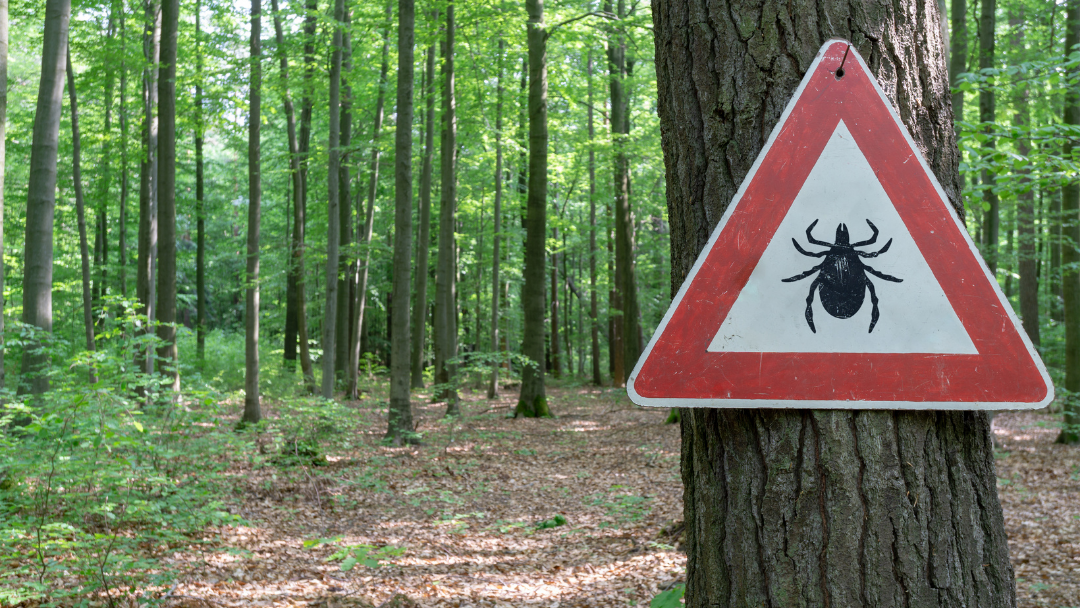After a long winter, it is finally warming up outside. Summer is almost here, where we will be enjoying swimming, camping, hiking, and gardening. Along with these activities, we also have the activity of checking for ticks. Lyme disease is an infection caused by the bacteria Borrelia burgdorferi carried by infected deer ticks. Ticks can attach to any part of the human body but are often found in the groin, armpit, and on the scalp.
In the early stages of Lyme disease, you may experience flu-like symptoms. You may develop muscle aches, joint pain, headache, fatigue, and fever. An Erythema migrans (EM) rash will develop in 70-80% of people infected with Lyme disease anywhere from 3-30 days after becoming infected. The rash may or may not develop at the site of the bite.
Not every deer tick is infected with Borrelia burgdorferi. A study conducted at the University of Wisconsin-Eau Claire found that an average of 35% of 341 adult female deer ticks collected from 21 counties around Wisconsin from 2010 to 20013 were infected with the Lyme bacterium. According to this study, the counties with the highest infected tick prevalence rates were Chippewa (66.7%); Dunn (44.4%); and Eau Claire (36.5%).
Lyme disease is treated with antibiotics for 21 days. If you have symptoms of Lyme disease, it is important to see your healthcare provider for early treatment. If Lyme disease goes untreated, it can lead to long term problems with your skin, joints, nervous system and heart.
Summer is a great season for being active outdoors. Remember that not every tick is infected with the bacteria and finding a tick on your body does not necessarily mean you will have Lyme. Be aware of the symptoms and ways to prevent yourself from becoming infected.
Tips for preventing Lyme Disease:
1. Infection does not occur until the tick has been attached for 24 hours, so a daily check for ticks is an effective first-line defense.
2. Use insect repellent with at least 20% DEET around your ankles, other areas of exposed skin and clothing.
3. Wear long sleeves and tuck pants into socks. Wear light-colored clothing so ticks are easier to spot.
4. Take a shower when coming in from being outdoors. This will help remove ticks that have not attached yet.
5. Try to tick proof your yard. Remove all brush and leaves where ticks live and create a barrier such as wood chips between your yard and the woods.
6. If walking on trails, stay to the center of the trail to avoid contact with long grass and brush.
7. Don’t assume you’re immune. Even if you’ve had Lyme disease in the past, you can contract it again.
8. Remove a tick as soon as possible with tweezers.

